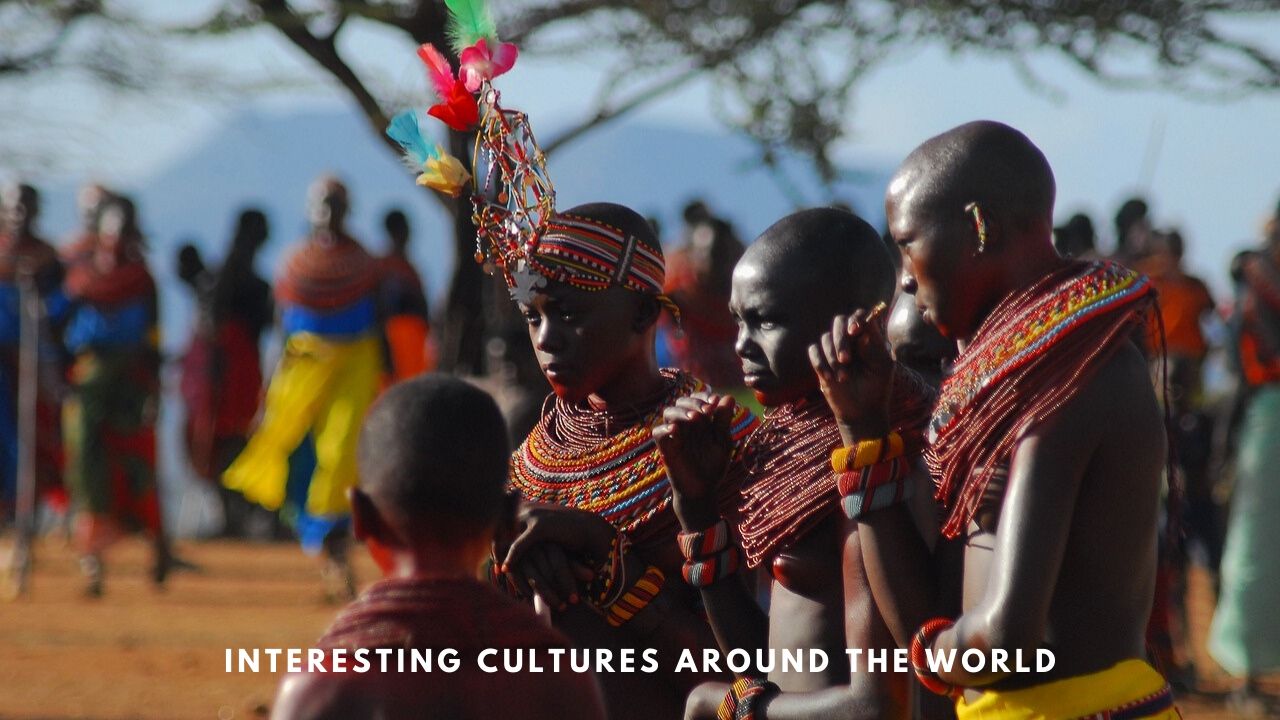This article showcases 10 fascinating cultures from around the globe, each with their own unique traditions, beliefs, and customs that define their society. From the semi-nomadic Himba people of Namibia to the Buryat people of Siberia, the diversity of human cultures is truly astonishing. The article delves into the traditional dress, language, music, and social organization of each culture. By learning about these societies, we can gain a deeper understanding of the incredible range of human experience and the richness of our shared history and heritage.
10 Fascinating Cultures That Prove How Diverse Humans Are
Human beings are fascinating creatures. We come in all shapes, sizes, and colors, and possess unique traits that make us who we are. One of the most interesting aspects of humanity is the incredible range of cultures that exist across the globe. From the Inuit people of the Arctic to the Māori of New Zealand, there is endless diversity in the traditions, beliefs, and customs that define each society.
1. The Himba People of Namibia
The Himba are a semi-nomadic tribe that live in the northwestern part of Namibia. One of their most striking features is the bright red ochre that they use to cover their skin and hair. Himba women also create intricate hairstyles that signify their age and status within the community. The Himba are known for their close relationship with nature and have a deep respect for the land that sustains them.
2. The Maasai People of Tanzania and Kenya
The Maasai are a pastoralist tribe that inhabit parts of Tanzania and Kenya. They are known for their distinctive clothing, which includes bright red shukas and beaded jewelry. They have traditionally relied on their herds of cattle for sustenance, and their way of life is closely tied to the natural environment around them. The Maasai have a unique system of social organization that centers around age-set groups.
3. The Sami People of Northern Europe
The Sami, also known as the Lapp people, are indigenous to the northern parts of Scandinavia, Finland, and Russia. They have a rich culture that is closely connected to the reindeer that they herd. The Sami have their own language and traditional dress, and they have a deep respect for the natural world around them. Their music and folktales provide a window into their unique way of life.
4. The Navajo People of the American Southwest
The Navajo Nation is the largest Native American reservation in the United States, covering parts of Arizona, New Mexico, and Utah. The Navajo have a language and culture that are distinct from other indigenous groups in the region. They have a strong connection to the land, and their ceremonies and rituals reflect this. One of the most iconic symbols of Navajo culture is the woven rug, which is made using traditional techniques passed down from generation to generation.
5. The Inuit People of the Arctic
The Inuit are indigenous to the northern parts of Canada, Greenland, and Alaska. They have a deep understanding of the harsh environment in which they live and have developed unique technologies and techniques to survive in these conditions. The Inuit have a rich mythology and oral history, which they pass down through storytelling and song. Their hunting and fishing practices are closely tied to their cultural identity.
6. The Māori People of New Zealand
The Māori are the indigenous people of New Zealand and have a unique culture that is deeply rooted in their connection to the land. They have a rich tradition of carving and weaving, and their language, which is known as Te Reo Māori, is one of the official languages of New Zealand. The Māori have a strong emphasis on community and place great importance on the concept of whānau, or extended family.
7. The Berber People of North Africa
The Berber people are indigenous to North Africa and have a rich history and culture that dates back thousands of years. They have their own language and traditional dress, and their music and poetry are renowned for their beauty and complexity. The Berber people have a deep respect for their ancestors and place great importance on family and community.
8. The Hmong People of Southeast Asia
The Hmong are an ethnic group that live in the mountainous regions of Southeast Asia. They have a distinct culture that is characterized by their traditional dress, which includes brightly-colored embroidered clothing. The Hmong are known for their intricate art and crafts, such as batik textiles and silver jewelry. They have a rich musical tradition that incorporates a variety of instruments, including the qeej, a long bamboo pipe.
9. The Zulu People of South Africa
The Zulu are a Bantu ethnic group that live in the southeastern parts of South Africa. They have a rich history and culture that is characterized by their traditional dress, which includes brightly-colored beaded jewelry and headdresses. The Zulu have a unique system of social organization that centers around clans and age groups. Their traditional music and dance, such as the powerful warrior dance, are an important part of their cultural heritage.
10. The Buryat People of Siberia
The Buryat are an indigenous group that live in the Siberian regions of Russia. They have a rich cultural heritage that is closely tied to the natural world around them. The Buryat have their own language and traditional dress, and their folklore and mythology are full of stories of shamanism and spirits. Their traditional diet includes foods such as smoked fish and wild berries, which are harvested from the surrounding forests and lakes.
Conclusion
The diversity of human cultures is truly astonishing. From the unique traditions of the Himba people in Namibia to the intricate art and crafts of the Hmong in Southeast Asia, each culture has something valuable to offer. By learning about these fascinating societies, we can gain a deeper understanding of the incredible range of human experience and the richness of our shared history and heritage.
